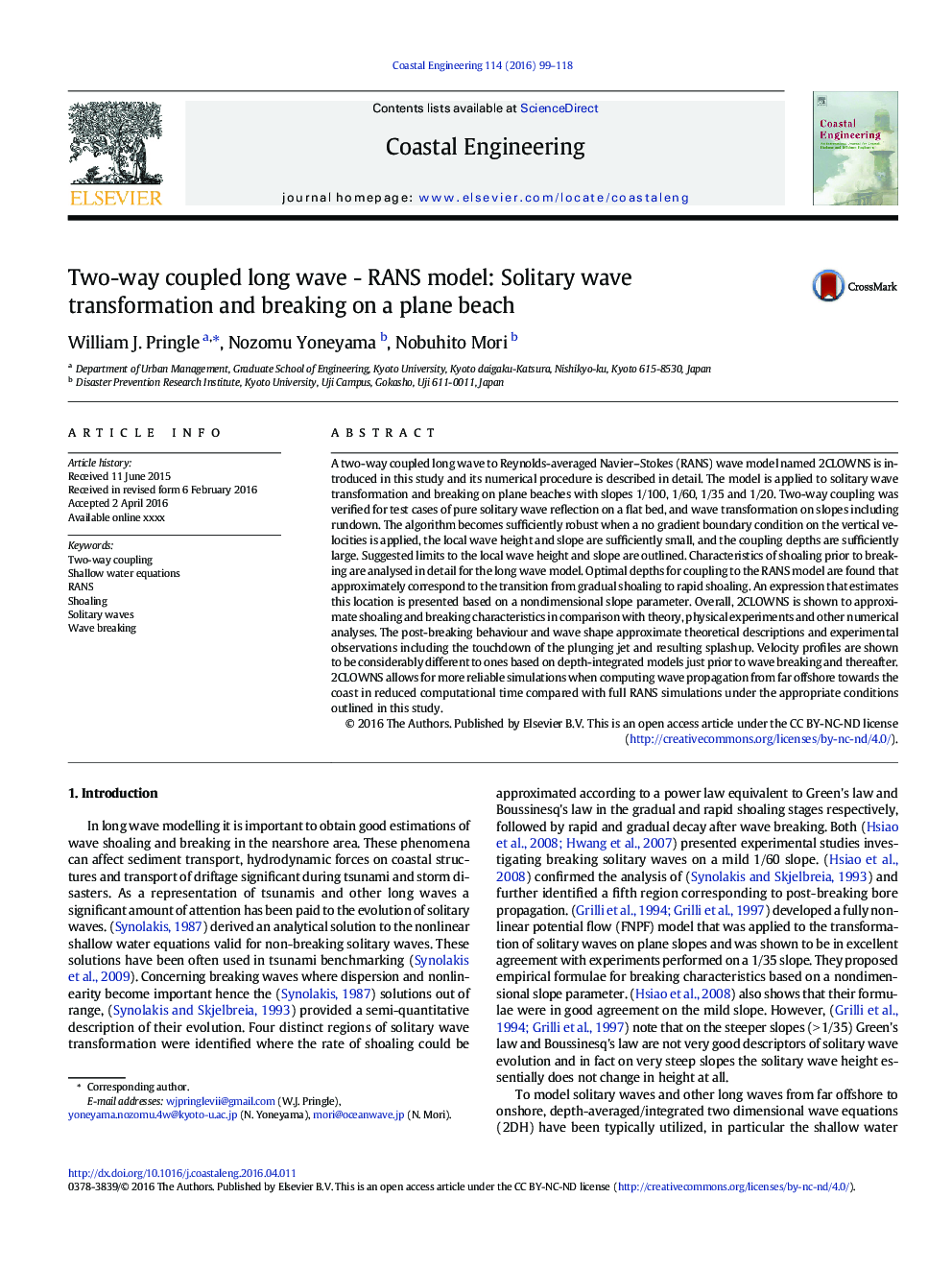| Article ID | Journal | Published Year | Pages | File Type |
|---|---|---|---|---|
| 8059698 | Coastal Engineering | 2016 | 20 Pages |
Abstract
A two-way coupled long wave to Reynolds-averaged Navier-Stokes (RANS) wave model named 2CLOWNS is introduced in this study and its numerical procedure is described in detail. The model is applied to solitary wave transformation and breaking on plane beaches with slopes 1/100, 1/60, 1/35 and 1/20. Two-way coupling was verified for test cases of pure solitary wave reflection on a flat bed, and wave transformation on slopes including rundown. The algorithm becomes sufficiently robust when a no gradient boundary condition on the vertical velocities is applied, the local wave height and slope are sufficiently small, and the coupling depths are sufficiently large. Suggested limits to the local wave height and slope are outlined. Characteristics of shoaling prior to breaking are analysed in detail for the long wave model. Optimal depths for coupling to the RANS model are found that approximately correspond to the transition from gradual shoaling to rapid shoaling. An expression that estimates this location is presented based on a nondimensional slope parameter. Overall, 2CLOWNS is shown to approximate shoaling and breaking characteristics in comparison with theory, physical experiments and other numerical analyses. The post-breaking behaviour and wave shape approximate theoretical descriptions and experimental observations including the touchdown of the plunging jet and resulting splashup. Velocity profiles are shown to be considerably different to ones based on depth-integrated models just prior to wave breaking and thereafter. 2CLOWNS allows for more reliable simulations when computing wave propagation from far offshore towards the coast in reduced computational time compared with full RANS simulations under the appropriate conditions outlined in this study.
Related Topics
Physical Sciences and Engineering
Engineering
Ocean Engineering
Authors
William J. Pringle, Nozomu Yoneyama, Nobuhito Mori,
